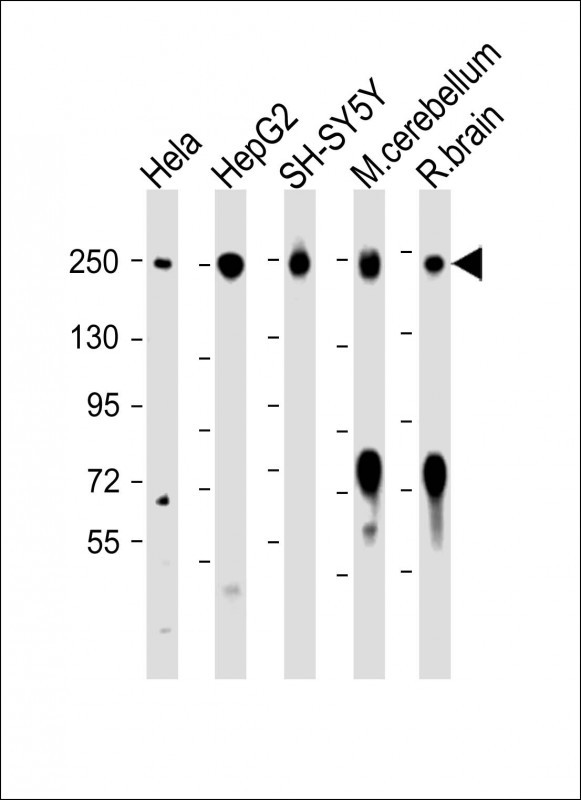产品名称
L1CAM Rabbit Polyclonal Antibody (C-term)
别名
Neural cell adhesion molecule L1, N-CAM-L1, NCAM-L1, CD171, L1CAM, CAML1, MIC5
存储缓冲液
Purified polyclonal antibody supplied in PBS with 0.05% (V/V) Proclin 300. This antibody is purified through a protein A column, followed by peptide affinity purification.
Human Gene ID
NP_000416.1;NP_001137435.1;NP_001265045.1;NP_076493.1
Human Swissprot No.
P32004
特异性
This L1CAM antibody is generated from rabbits immunized with a KLH conjugated synthetic peptide between 1154-1182 amino acids from the C-terminal region of human L1CAM.
运输及保存条件
Maintain refrigerated at 2-8°C for up to 2 weeks. For long term storage store at -20°C in small aliquots to prevent freeze-thaw cycles.
背景介绍
L1CAM is an axonal glycoprotein
belonging to the immunoglobulin supergene family. The ectodomain,
consisting of several immunoglobulin-like domains and
fibronectin-like repeats (type III), is linked via a single
transmembrane sequence to a conserved cytoplasmic domain. This cell
adhesion molecule plays an important role in nervous system
development, including neuronal migration and differentiation.
Mutations in the gene cause three X-linked neurological syndromes
known by the acronym CRASH (corpus callosum hypoplasia,
retardation, aphasia, spastic paraplegia and hydrocephalus).
Alternative splicing of a neuron-specific exon is thought to be
functionally relevant.
细胞定位
Cell membrane; Single-pass type I membrane protein {ECO:0000250|UniProtKB:Q05695}. Cell projection, growth cone {ECO:0000250|UniProtKB:Q05695}. Cell projection, axon. Cell projection, dendrite Note=Colocalized with SHTN1 in close apposition with actin filaments in filopodia and lamellipodia of axonalne growth cones of hippocampal neurons (By similarity). In neurons, detected predominantly in axons and cell body, weak localization to dendrites (PubMed:20621658) {ECO:0000250|UniProtKB:Q05695, ECO:0000269|PubMed:20621658}
功能
Neural cell adhesion molecule involved in the dynamics of cell adhesion and in the generation of transmembrane signals at tyrosine kinase receptors. During brain development, critical in multiple processes, including neuronal migration, axonal growth and fasciculation, and synaptogenesis. In the mature brain, plays a role in the dynamics of neuronal structure and function, including synaptic plasticity.

